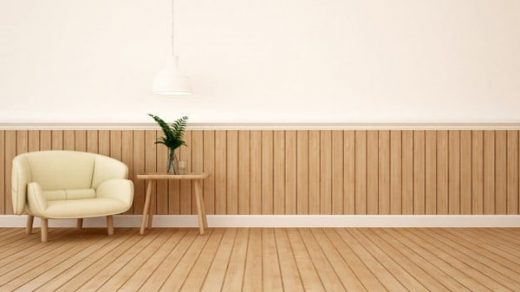What are Abalones?
Abalones are gastropod molluscs belonging to the Family Haliotidae. The genus Haliotis means “sea ear.” There are about 70 species of abalone distributed worldwide. Abalones are slow-growing one-shelled gastropods which live in rocky and shallow waters near stands of algae. The abalone shell is characterized by having a row of respiratory pores called “tremata” located along its left margin.
There are three species of abalone that naturally occur in Philippine marine waters: the donkey’s ear abalone Haliotis asinina (local name – “lapas” or “sobra-sobra” in Ilonggo), H. varia (local name – “kapinan”), and H. ovina. H. asinina grow to a maximum size of 10-11 cm in shell length while H. varia and H. ovina are relatively smaller with maximum shell length of 6-8 cm. There are existing commercial abalone fisheries in the provinces of Iloilo, Guimaras, Negros, Samar, Surigao, Zamboanga, Palawan and Tawi-Tawi.
GENERAL BIOLOGY
Abalone species that occur in temperate regions are bigger than the species found in the tropics. Tropical species are associated with coral and stone substrates while temperate species are found on rocks and boulder substrates. Abalones are herbivores: veliger larvae and early juveniles feed on epiphytic microalgae such as diatoms then gradually shift to macro-algae or seaweed until the adult stage. Captive abalone attains sexual maturity within 6-8 months of culture at shell size range of 35-40 mm. Sex can be distinguished by visual inspection of the gonad: females have dark green gonad while males have milky-white gonad. In gravid animals, the gonad bulk can be seen protruding between the shell and the foot muscle. Gonad maturation is enhanced by proper nutrition, high water temperature, and longer photoperiod.
Tank-reared broodstock can spawn year-round. During spawning, gametes of either sex are released into the water column where fertilization takes place. Males release their milt earlier that triggers spontaneous spawning in mature females. Spawning may occur between one and three o’clock in the morning. During spawning, water in the spawning tank turns cloudy due to milt released by males. A female breeder of 50-80 mm shell length can spawn from 100,000 to 1.0 million eggs at one spawning time. The time interval between two successive spawnings can vary from 13 to 37 days. Younger female breeders may spawn more frequently and have higher fecundity than the older females.
HATCHERY
Broodstock are held in fiberglass or concrete spawning tanks of 1-ton capacity with flow-through sand-filtered seawater. Wild-caught or hatchery-bred adults of 50-60 mm shell length are stocked at a ratio of one male to 3-4 females. A series of 10 spawning tanks each stocked with 50-60 breeders can provide a steady supply of eggs and larvae through-out the year.
Spontaneously spawned eggs are collected early in the morning between 6 and 7 o’clock. At this time the eggs are either at late trochophore or early veliger stage. Veligers are free-swimming, positively phototactic and non-feeding planktonic larvae.
During collection, veligers are siphoned into holding basins containing 0.5-micron cartridge filtered-seawater and held until they reach the creeping stage. The rearing water is decanted and replaced with freshly filtered seawater for several times to remove excess milt and debris. After 10-12 h post-fertilization, abalone post-larvae are siphoned into separate containers, the total number estimated by aliquot sampling and then, stocked in the prepared settlement tanks.
DIATOM CULTURE
Settlement tanks are prepared a week before stocking to allow the culture of epiphytic diatoms on the plate substrates. Corrugated white PVC roofing sheets cut into 30 x 45 cm are vertically suspended inside the rearing tanks to serve as settlement substrates. A 1-ton oval rearing tank can hold 50-60 pieces of vertically suspended plates. Tanks are filled with 10-micron cartridge filtered-seawater to a depth of 40- 50 cm. Seawater shall flow continuously until the plate surfaces turn pale greenish-brown after a week of culture indicating growth of diatoms. Diatom culture is enhanced by continuous illumination. Tanks are held under ambient light during the day providing a light intensity of 2500-3000 lx. Artificial lights such as 40-watt fluorescent lamps are installed over the tanks at night. The micro-algal communities may consist of the most common genera such as Navicula, Cocconeis, Amphora, Achnanthes, Cylindrotheca, Nitzschia, among others.
POST-LARVAL SETTLEMENT AND PRIMARY NURSERY REARING
Abalone larvae exhibit creeping behavior indicating the need for substrates for attachment. Before stocking, the plates are rinsed to remove algal debris and excessive growth of diatoms and tanks are totally drained. Then, tanks are filled with sand-filtered seawater that passes thru a 0.5 micron cartridge filter. Creeping larvae are stocked at 150,000 to 300,000 per one-ton tank.
A static water condition is maintained in the rearing tanks within the first 8-10 days from stocking to allow settlement of postlarvae. A mild aeration is provided on the 5th day of stocking. At daytime, tanks are exposed to ambient light. At night, however, artificial lights using 40-watt fluorescent lamps installed at about 50 cm above the tanks provide illumination. On the 10th day filtered seawater is admitted continuously to refresh rearing water. The newly-settled postlarvae are reared over 60 days or until they reach the early juvenile size ranging from 5 to 10 mm in shell length at which size the juveniles are ready to feed on macro-algae. Fresh seaweed Gracilariopsis bailinae is placed sparingly in between plates to initiate feeding, thus weaning the juveniles from diatoms. Smaller-sized juveniles (ca. 2-3 mm SL) are still allowed to feed on diatoms until they reach a size of >5. Juveniles are then harvested and stocked in the secondary nursery tanks or perforated plastic baskets suspended in flow-through tanks and fed fresh seaweed G. bailinae to satiation.
SECONDARY NURSERY
Early juveniles are stocked from 600-1000 per m2 of inside surface area of perforated plastic mesh baskets suspended in flow-through tanks. Fresh seaweed G. bailinae is fed to satiation given at weekly intervals. Artificial shelters made of cut PVC gutters or halved PVC pipes are provided in each basket. Juveniles are reared for 70-80 days or until they reach a shell length of 30 mm, the stocking size for grow-out.
Artificial feeding with commercially prepared or SEAFDEC-formulated diets has been successfully tested. Formulated feeds containing 27% crude protein, 5% lipid and 40% carbohydrates are found to be adequate as basal feed for abalone juveniles of 15-mm shell length. Feeds are fed at 3-5% of the body weight given twice daily. However, it is important that abalone should be stocked directly in rearing tanks with solid bottom to contain the feed particles. Sand-filtered seawater should be continuously supplied to maintain a good water quality during culture.
GROW-OUT
Culture of abalone from 30-mm size juveniles to marketable size of 55-60 mm shell length is carried out either in flow-through tanks or in sea cages within 8-10 months. Stocking density ranges from 60-100 per m2 surface area of shelter provided inside each cage. Tank culture involves a continuous inflow of sand-filtered seawater with vigorous aeration. For ease of feeding and maintenance, abalones are held in perforated plastic buckets or in PVC framed mesh cages suspended in tanks. For sea cage culture, cages are suspended from a floating bamboo platform that is securely anchored by bamboo stakes or concrete blocks. Abalones are fed fresh seaweeds ad libitum given at weekly intervals.
For further information contact:
SEAFDEC Aquaculture Department
Tigbauan 5021, Iloilo, Philippines
Tel: (63 33) 336 2937, 336 2965, 335 1009
Fax: (63 33) 335 1008, 336 2891
E-Mail: aqdchief@aqd.seafdec.org.ph/
Website: http://www.seafdec.org.ph/
Photo: adrianfurby – flickr.com
Do you like this Money Making Business Idea? then please consider subscribing to our Pinoy Bisnes RSS feed. You can also subscribe by email and have new articles sent directly to your inbox. (Once you entered your e-mail address, you need to login to your e-mail account and click the link to confirm your subscription).




Recent Comments